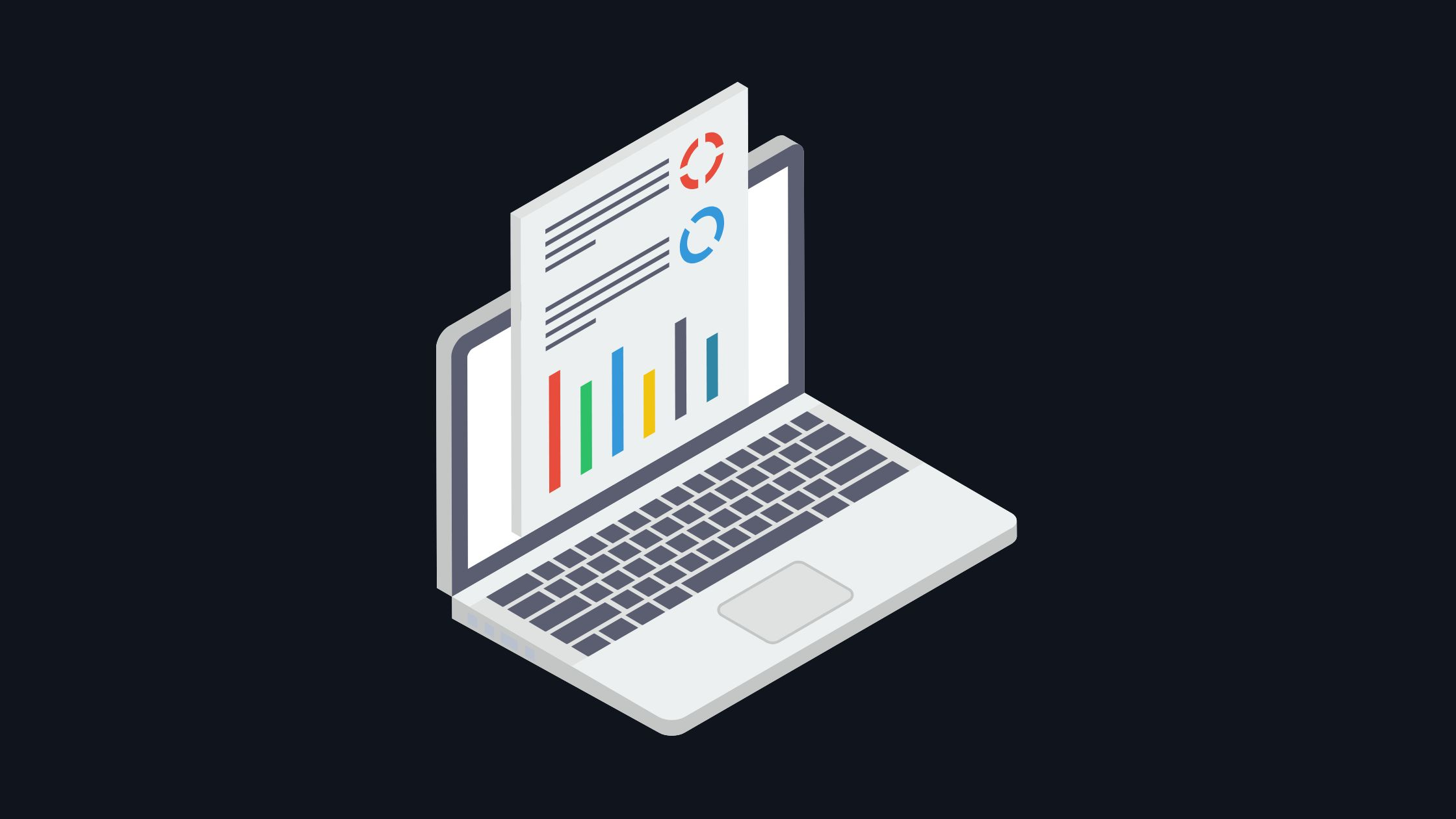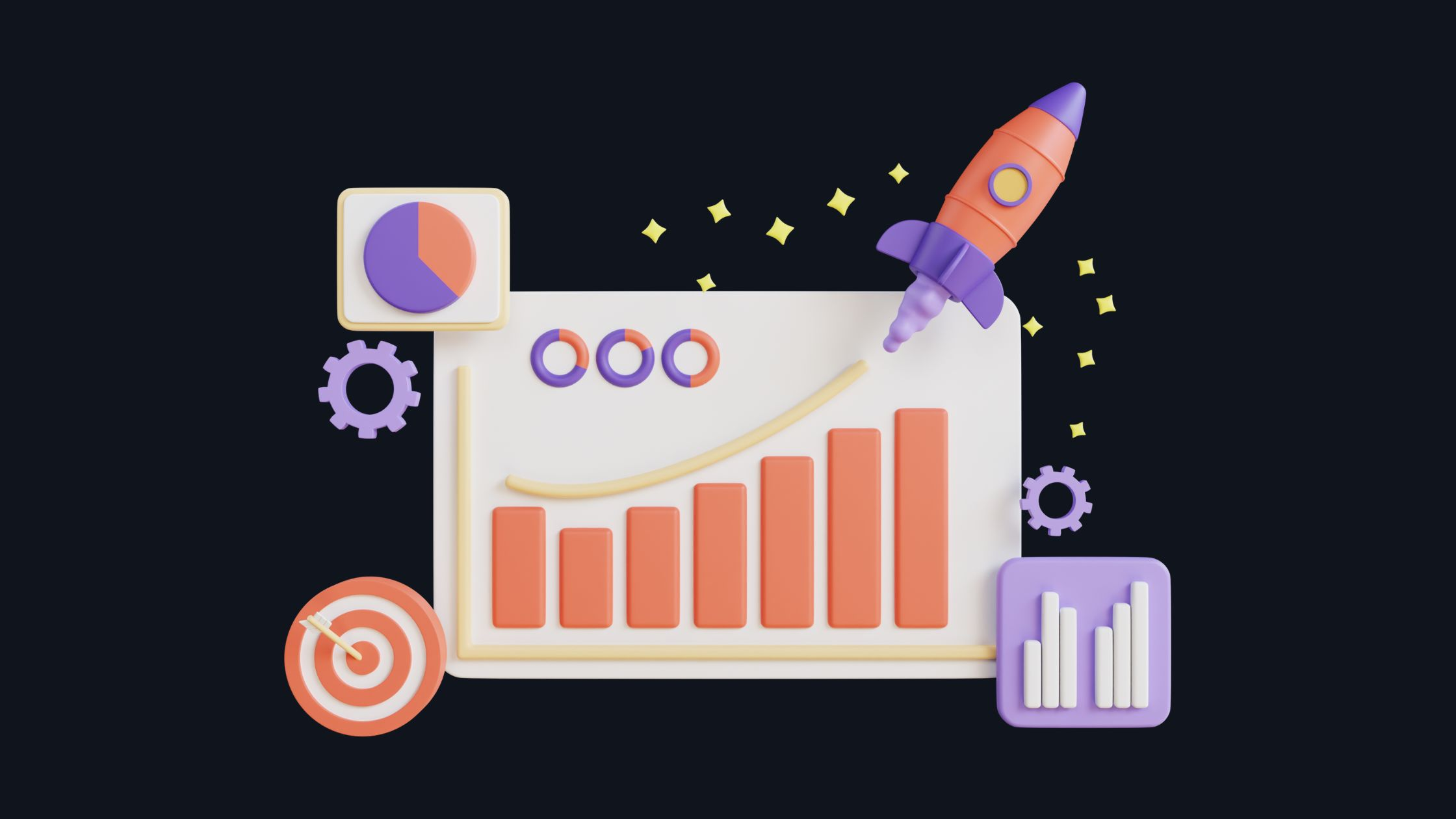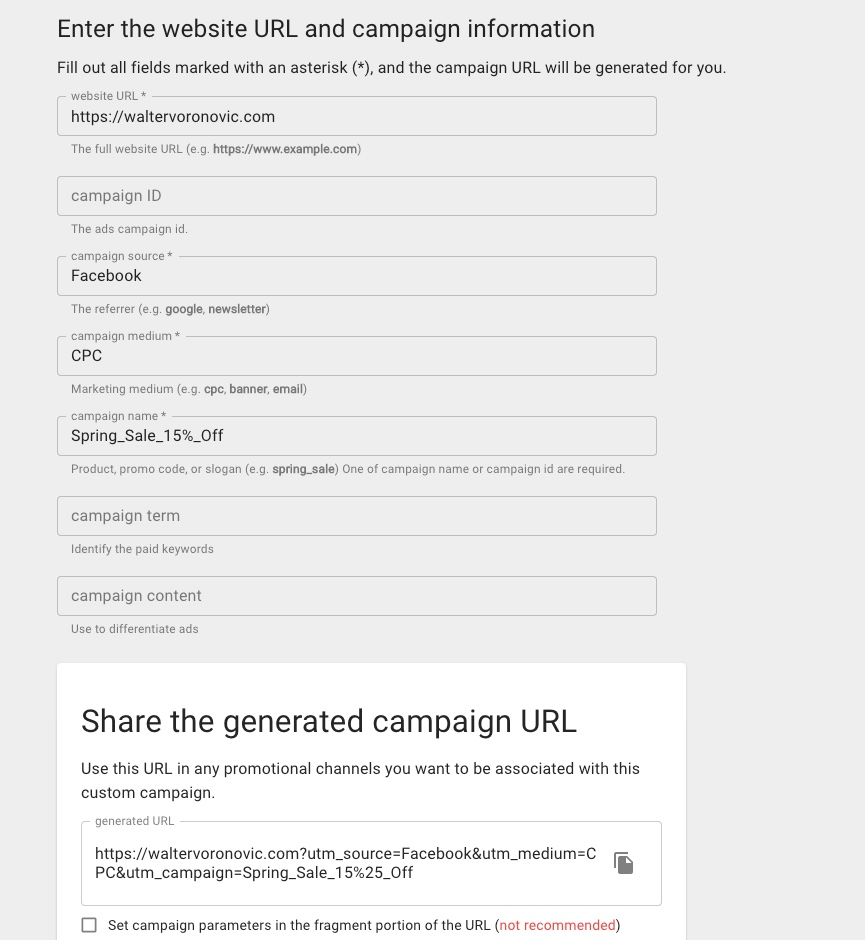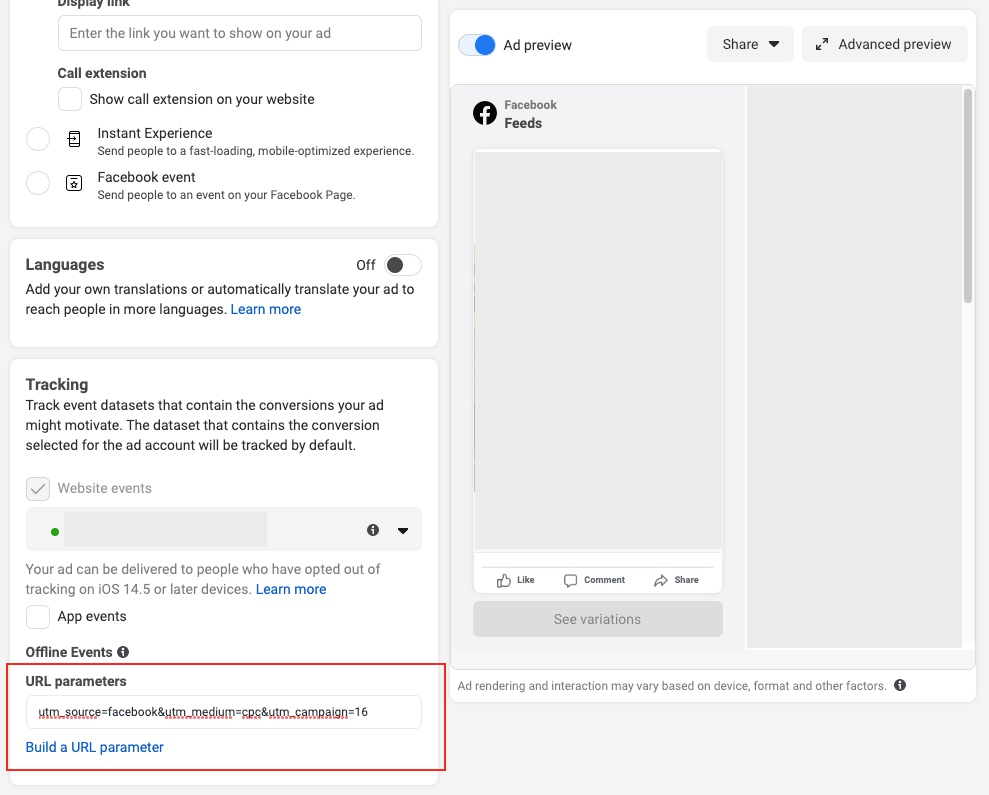Marketing teams rely on ad tracking to refine their campaigns and maximize returns.
However, new privacy initiatives, ad blockers, and iOS 14.5 aim to block those critical ad-tracking efforts leaving marketing teams scrambling to adapt.
Thankfully, there are still ways to track advertising performance.
From software to custom code, marketing teams can leverage ad-tracking tools to gain valuable insights into customer behaviors without compromising anyone’s privacy.
Even if you don’t invest in ad-tracking software to support your marketing efforts, there are plenty of free ways to get the data you need.
This guide can help you work around the roadblocks to set up ad tracking to keep tabs on accurate numbers for your campaigns.

Ad tracking by definition involves collecting and recording accurate data to measure and evaluate a campaign’s performance.
The data acquired by utilizing ad tracking methods allows marketers to analyze campaigns to determine what works and what could work better.
Most advertising link-tracking tools can provide answers to key questions about ad performance.
How many views did the ad receive?
How long did users stay on the advertisement?
Did the user click on the ad?
Did the user follow the CTA, visit the website, or otherwise convert based on the ad?
Advertisement tracking remains the best method to measure campaign performance across all platforms.
It also allows marketers to test different ads to see what products or phrasing work best for future campaigns.
You probably work with several platforms for any campaign as a marketer.
You might even receive data from each platform that provides a general overview of visits and clicks.
Ad tracking software offers more in-depth insights.
For example, you can run two spring break ads across all platforms and differentiate between the two so that you can see which performs better across each platform.
Plus, it works across multiple channels, including Facebook ads, Google ads, emails and newsletters, and SMS campaigns.
The goal of tracking ads and analyzing the data is to understand the sweet spot for conversions.
You can use real-time, accurate data to determine how much to spend on each platform to get the best return on investment (ROI).
You may have asked yourself – is ad tracking illegal?
Amid growing concerns over privacy issues, public agencies and private corporations stepped in to set limitations.
For example, the General Data Protection Regulation (GDPR) offers guidance for those residing in the EU (European Union).
Several platforms, including Google, committed to compliance with those standards.
Apple also embraced the concern for privacy standards.
All Apple devices with iOS 14.5 require apps to ask permission before tracking any of your activity.
Users can select the “Ask App Not to Track” feature to protect personal information and user behaviors.
Additionally, a faction of internet users leverage ad-blocking software to bypass advertisers from collecting data.
Around 37% of people around the world use ad blockers.
Consumer tools and concerns about privacy issues changed the way marketers can track advertising campaigns.
However, as long as marketing teams comply with all ad tracking regulations, they can avoid fines and penalties.

Despite an uptick in users leveraging ad blockers on their devices, marketers have a range of tools to track digital advertising performance.
Most advertisement tracking tools fall under one of four categories and offer unique perspectives.
Cookies are small files in the browser that store user information for specific websites.
It can range from user settings for a site to how they interact with the pages, like what information they look for most often.
Since cookies can monitor user behavior, they remain valuable for analytics.
Information from cookies helps marketers assess how their target audience interacts with their products or services.
Cookies also allow marketers to create custom profiles to provide relevant information to each user.
The best way to use cookies is to gather data about what your audience wants to see.
For example, they let marketers know who’s interested in their product.
Cookies make it seem like platforms read your mind. Say you search for a lawn mower on Google and view a few at one online store.
The next time you go on Facebook to check in, you will likely find ads for lawnmowers on your feed.
Even better, cookies provide detailed information and help you create in-depth, personalized profiles for your visitors.
Most people know that pixels create digital images, but did you know that transparent images overlaid on digital content can track views?
A Tracking pixel communicates with analytics platforms (ex. Google ad manager) to provide marketing teams with data on user encounters.
Marketing teams can embed these tiny images in almost any digital content, including an email or an ad campaign.
These 1×1 images function much like cookies to track user behavior and assist marketers in assessing campaign performance.
Pixels provide slightly different information from cookies.
Every time the pixel loads, it signals an interaction, even if the users view but never click the ad.
Since it tracks views and clicks, marketers receive additional insight into their ads.
The transparent images can track impressions for digital ads, how many people open emails, and which ads convert to sales.
Further, pixels support your marketing efforts by projecting on the audience.
Based on views or clicks, the pixels can trigger paid ads for the users that engage with them.
Ad tracking with pixels works best for assessing the effectiveness of a specific ad.
For example, you run an ad that gets a lot of views but few clicks.
It’s a sign you might need to switch up something about the ad to improve its success.
Facebook ad campaigns remain one of the most popular types of digital advertising.
The Facebook ad tracking pixel is one powerful tool that tracks a range of engagements, including downloads and signups.
This tiny bit of JavaScript code packs a punch with the ability to track everything from HTTP headers to button clicks.
You can access all data through the Facebook Ads Manager and tap into a range of digital marketing segmentation options.
Meta pixel’s help center can guide users through the steps to comply with the iOS 14.5 tracking rules.
Urchin Tracking Modules, or UTM code, refers to extensions of URL codes that tell marketers where traffic comes from.
If you already use cookies and pixels, you probably have one burning question about UTM links.
What is a tracking URL going to tell you that you don’t already get from other analytics?
UTM code can provide more detailed information about your campaign traffic by adding specific parameters to the landing page URL.
You can add specific values, like campaign names, the target keyword term, and the source platform.
Adding these parameters allows you to analyze data on different points.
For example, you could run two competing campaigns to see which converts more often.
UTM tracking links also allow you to compare the same ad concept across multiple platforms to see which posts perform best on each one.
Marketers should consider link trackers for pay-per-click (PPC) or email campaigns.
It also works if you advertise on other websites. Using UTM codes can help you determine which platform delivered the best returns and narrow down your target audience.
Finally, Conversions API is an ad tracking tool that takes this to a new level to create a more comprehensive picture of user engagement.
Instead of limiting ad tracking to browsers, it pulls information from the web server.
The Conversions API comes from Facebook, now known as Meta.
The platform leverages the Meta pixel for tracking advertising data directly from the server to provide in-depth analytics & optimizing campaign performance without violating user privacy standards.
Marketers can track three metrics: page visits, web conversions, and post-conversion engagement.
This data creates a more comprehensive idea of how ads perform at every stage of the sales funnel.
Access to such extensive, longitudinal data fills in the gaps left by other methods.
Some businesses reported improvements in spending, targeting, and overall conversions.

Ad tracking might be one of the best ways to reach your marketing goals.
You get valuable feedback on how specific ads perform.
If you aren’t sold on the merits of tracking ads, consider the following key benefits.
You might think you know who your target audience is and what they like, but guessing is never as definitive as hard data.
Ad tracking can clarify your audience’s behaviors, interests, and motivations to help you refine campaigns that resonate on a deeper level.
You can learn about interests, preferences, and demographics to refine your marketing approach.
When you look at the analytics, you’ll easily see what ads connect and which ones fall short. You can also make predictions or use software to do so about future purchases.
When you know more about your audience, you can craft the ideal ads for more targeted audiences.
Even if your product or service appeals to a range of demographics, different advertising approaches might convert more across the board.
For example, you sell travel bags that anyone can use.
You could use a single ad and set the target audience wide.
On the other hand, you could tighten things up and segment your audience with custom ads that speak to their pain points.
Ad tracking provides the insights you need to create this layered approach and make your audience feel heard.
Understanding your target audience and crafting custom content is only part of the equation.
Ad tracking provides the data you need to optimize every future campaign, so there’s less trial and error with a higher success rate.
For example, let’s say you run a particularly successful spring break sale campaign.
Take the data from that success and use it to refine other ads with similar features.
Some marketing teams might combine the data from their ad trackers with AI and ad-building software.
Instead of your team analyzing the data and applying it to new campaigns, the software can efficiently craft relevant, high-quality ads.
How much do you lose in ads that land on the wrong viewers?
Stop wasting ad money on poorly targeted ads that don’t convert.
Even if your campaigns hit the standard ROI, wouldn’t it be nice to perform above average and maximize those returns?
Tracking ad performance lets you know what content strikes a chord, which ones have the highest conversion rates and those you need to cut loose for underperforming.
You can also run a few similar ads to see which ones perform best and use the data to refine your future campaigns.
Using ad tracking information to refine your approach improves your chances of attracting the right customers to your sales funnel.
Drawing more qualified leads translates to more engagement and higher conversion rates.
Ad tracking can save you time on all of the above.
It’s not just about running more effective campaigns, it’s also a more efficient marketing strategy.
Think about all of the ways you gain insights into your target audience, including checking out competitors and performing market research.
It all takes a lot of time to collect the information, and it doesn’t always pinpoint what people actually want or need to commit to a purchase.
Ad tracking occurs in the background and provides data on what your audience likes, what platforms they prefer, and what approaches appeal most to them.
Maybe you find that a freebie works well with one segment, but a two-for-one deal appeals more to another.
Even if the end result is the same, using different wording lets you target two segments more accurately.

Using UTM link parameters can give you valuable insights and improve your marketing strategy.
It’s also surprisingly easy to set up.
Go to the Google Analytics Campaign Builder.
It’s free and easy to use by filling out a simple form.
Start by inserting your landing page’s link into the top box.
You also need to provide some additional information:
Create a campaign identification. The text will identify the specific campaign this referral should reference.
Source should be the platform you use, like Google, newsletter title, or Facebook.
Medium refers to the type of platform, like PPC or email campaigns.
Name your campaign, so you know what it’s for and can separate it from others, like Winter Clearance or Spring Break.
Additionally, there are two optional boxes that you can complete for specific campaign types or goals.
If you have a paid search, you can insert the key terms for the campaign in the “Term” box.
The Campaign Content box allows you to test two different ads that lead to the same URL. Completing this option for each ad lets you track which one performs best.
Keep in mind that while you want to differentiate between ad campaigns, you don’t want to make the UTM links too long.
Also, since the link translates to coding for a URL, you cannot use spaces between words.
As you complete the boxes, the site generates a new URL that you can copy.
Note that it’s possible to shorten the generated URL by clicking “shorten link” on the same page.

Go to the ad level and look for the website URL box.
Paste the link from the Campaign Builder into the block and save it.
Alternatively, you can insert the campaign landing page without the UTM parameters in the box.
If you do, you need to copy just the UTM parameters from the link and paste them at the bottom of the tracking box.
What are ad trackers able to do for your marketing efforts?
A lot.
If you aren’t already leveraging ad tracking, you’re missing out on key insights on campaign performance.
Understanding how various ads perform and what platforms give you the best ROI can help you reach and exceed your marketing goals.
It’s likely that you will need to employ more than one ad tracking type to support your efforts.
While user privacy remains an important consideration, there are ways to protect sensitive user information and still obtain the data you need.
Tracking ads remains a legal practice as long as you follow the rules and regulations.
Stick with platforms and software that comply with established standards.
Many companies and platforms post their compliance agreements on their sites to give you peace of mind.
Ad tracking isn’t a novelty for marketers, it’s a necessity.
If you want to maximize your advertising dollars and improve your user experience, you need custom campaigns.
That means you need the data from ad trackers to determine what makes your audience tick.